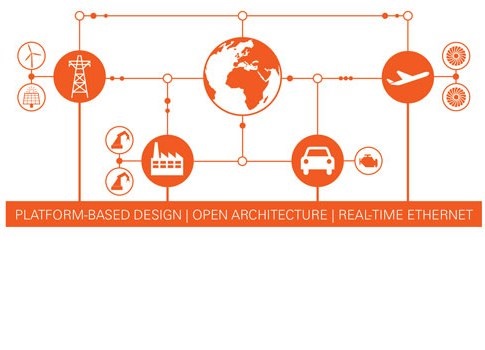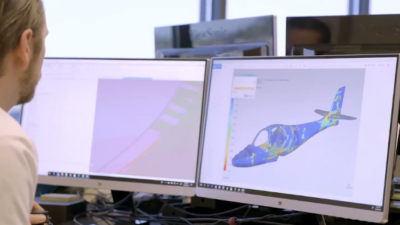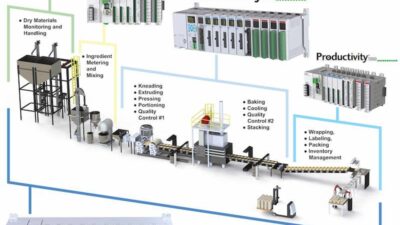Cover story: Smarter, platform-based approaches can address the complexity challenges the Industrial Internet of Things (IIoT) brings to enable IIoT systems that are adaptive, scalable, secure and continually modified and maintained.

The world has long been composed of devices that are connected or intelligent, but not both. Connected systems like telephone lines and light switches can transmit information, but offer little to no intelligence. Intelligent systems such as engine control units and thermostats have onboard processing intelligence, but can’t communicate outside of the closed circuit. [This is part of the June Control Engineering cover story on Industry 4.0 and Industrial Internet of Things to help make smarter factories.]
Today, the people you see connecting around you are using systems and devices that marry the two concepts to become both intelligent and connected. What you’re seeing is the Internet of Things (IoT): a collision of systems that have traditionally been disparate. The Consumer Internet of Things (CIoT) includes everything from smart homes, mobile fitness devices, and connected toys whereas the Industrial Internet of Things (IIoT) includes smart agriculture, smart cities, smart factories, and the smart grid.
Platform IIoT approach
This connectedness, particularly in the industrial and consumer spaces, increases the demands on traditional design and manufacturing test systems. Once popular options like fixed-function, black-box instrumentation, and turn-key data-logging software can’t keep up with the number of standards, protocols, and functionalities that modern business demands. These systems of systems require software that meets key requirements like prototype to deploy, flexibility, and decision making at the node. If you are building a system today, you need a foundation to stand on that adapts to and even anticipates changing system requirements. That foundation is a platform-based approach.
We need to be thinking beyond the current challenges and providing flexible solutions with a platform-based approach for the unknown future. You can’t build future systems based on the energy infrastructure of today or on the wireless standards we currently understand.
There are a few key things to know about a platform-based approach and how it will enable companies and makers to accelerate productivity, innovation, and discovery in the IoT era.
Connected IIoT
Connected IIoT systems need the flexibility to evolve and adapt. Developing and deploying the systems that will make up the IIoT represent a massive investment for decades to come. The only way to meet the needs of today and tomorrow is not by predicting the future but by deploying a network of systems flexible enough to evolve and adapt. This requires a platform-based approach; one flexible hardware architecture deployed across many applications removes a substantial amount of the hardware complexity and makes each new problem primarily a software challenge. The platforms that system designers choose need to be based on an information technology (IT) friendly operating system (OS) so they can be securely provisioned and configured to properly authenticate and authorize users to maintain system integrity and maximize system availability.
A platform-based approach reduces time and cost to market in the CIoT. Cost and time to market are the driving factors when choosing test equipment in the CIoT. Certain companies, such as those that test memory and microcontrollers, are satisfied with fixed-functionality "big iron" testers. But as companies innovate and rapidly evolve the functionality of their devices, they need a smarter automated test equipment (ATE) platform that can productively scale with that innovation. With a platform-based approach, engineers can scale up the capability of a tester by adding modules when necessary, which eliminates the high cost of retooling the hardware or rewriting the lowest levels of software.
The Internet for everyone requires a platform-based approach. The mobile Internet has painted a picture of continued innovation and inspired researchers all over the world to think beyond faster data and greater capacity. These new networks, referred to as fifth generation or 5G, may transform our lives and unleash enormous economic potential. However, 5G also presents researchers with a challenge to improve more known, but no less important, issues such as the coverage uniformity across a served region and more energy-efficient networks. 5G will happen, and its impact will be transformational, but researchers need to take a platform-based approach to design and rapidly prototype their concepts faster in order to expedite the time to market and deployment. Ultimately, this will help unlock the full potential of the IoT.
System integration
Integrated hardware and software will allow makers to advance the IoT. Makers around the world are inspiring each other to create smart gadgets, robotic gizmos, autonomous drones, and wearable devices. These innovations are no longer monopolized by multimillion dollar companies. Instead, makers work in home garages and collaborative workspaces with their peers. More importantly, they openly share their inventions online to inspire new innovations from other makers. The proliferation of wireless connectivity and cloud computing is helping makers contribute to the IoT. An interconnected world adds functionality and greater insight into an unlimited number of existing and new devices. An integrated hardware and software platform will enable the maker movement to advance the IoT much like the open platform for mobile app creation has developed a new economy around smartphones.
More companies and makers are adopting a smarter, platform-based approach to address the complex challenges the IoT brings. Ultimately, this will enable IoT systems that are adaptive, scalable, secure, and continually modified and maintained.
– Ray Almgren is vice president of marketing, National Instruments; edited by Mark T. Hoske, content manager, CFE Media, Control Engineering, [email protected].
Key concepts
- An IIoT platform-based approach allows one flexible hardware architecture deployed across many applications and removes hardware complexity.
- IIoT systems represent a massive investment for decades to come.
- Faster wireless networking, 5G, will help IIoT performance.
Consider this
Will you be keeping up with smaller, nimbler competitors as IIoT accelerates the pace of innovation?
ONLINE extra
See "Industrial Internet of Things (IIoT) and Industry 4.0 webcast: Overview and practical advice for today."
Click here for more information from the Industry 4.0 and IIoT June Control Engineering cover story.


